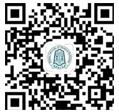地点:图书馆一层中心会议室
Abstract:

Nanostructured materials possess unique physical properties that are not found in their bulk counterparts, and some properties can be tailored by change the characteristic dimension of the nanomaterials. Devices and systems based on appropriately designed and fabricated nanostructures and nanomaterials can demonstrate remarkably enhanced performances. The large specific surface area and short diffusion distance can surely enhance the interface and transport kinetics, while the surface energy and defects will impact the phase transition and reaction thermodynamics. In this presentation, I will use three examples to illustrate how energy conversion and storage efficiency can be significantly improved through careful design and engineering of materials on the nanometer and micrometer scales and through surface chemistry modification. The first example is the manipulation and control of nanostructures and surface chemistry of porous carbon for supercapacitors. The second example is nanostructured electrodes for lithium-ion batteries. Nanostructured electrodes have demonstrated specific energy and specific power improvements with excellent cyclic stability. Further enhancement in energy density can be achieved through introduction of defects and modification of surface chemistry. Lastly I will discuss the nanostructured photoanodes for dye-sensitized solar cells, quantum dot-sensitized solar cells and inverted polymer solar cells, and the impacts of surface chemistry and morphology on the power conversion efficiency.
Speaker:
北京化工大学化学工程学院
有机无机复合材料国家重点实验室 陶霞教授邀请家重点实验室 陶霞教授邀请

